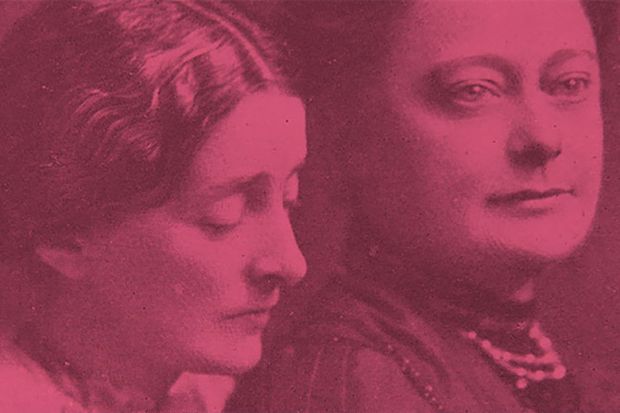The Benson family was, indeed, very queer. Edward White Benson, paterfamilias and Anglican priest (Archbishop of Canterbury in the 1880s and 1890s), proposed to his cousin, Minnie Sidgwick, when she was just 12. They married when she was 18. She soon discovered that her desire was for women, had numerous same-sex liaisons throughout their marriage, and moved her final romantic partner, Lucy Tait (daughter of the previous Archbishop of Canterbury) into Lambeth Palace long before Edward left her a widow.
Edward and Minnie had six children: Martin died when young; Fred was the novelist of Mapp and Lucia fame; Arthur taught at Eton and later became master of Magdalene College, Cambridge; Hugh became an Anglican – later Roman Catholic – priest; Maggie was the first female published Egyptologist; Nellie died aged 27 of diphtheria, doing good works in Southwark after a fling with the composer Ethel Smyth. None of the five who reached adulthood married; they all directed their desire to people of the same sex – although not all of them acted on it. And even though their father was Archbishop of Canterbury, they largely rejected institutional Anglicanism, Hugh most dramatically by his conversion.
As Goldhill remarks, “this looks like a family ripe for sensational biographical exploration”, but he quickly clarifies that his book will not take that route, declaring that he finds biography “a ludicrous genre”. Given that the premise – and, frankly, potential appeal – of his book is the extraordinary lives the Bensons led, avoiding biography might be tricky, but Goldhill manages it, analysing the multiple meanings of the Bensons’ “lives”.
He focuses initially on the ways in which the Bensons wrote endlessly about each other and themselves in diaries, letters and books: “This is a family that wrote itself.” Through close readings of this extraordinary excess of material, Goldhill illustrates the impossibility of writing a straightforward narrative, showing, for example, how differently Arthur and Fred interpreted their parents’ strange marriage. Readers unfamiliar with the Bensons might find this first part of the book disorienting at times, and perhaps that is the point, for Goldhill reveals, through his attention to the contradictions of the Bensons’ tellings and retellings of family episodes, how modern identities emerged in conversation with shifting meanings of religion, sexuality and gender.
From the courtship of Edward and Minnie in the 1850s to the death of Fred in 1940, ideas and conventions about sexuality changed hugely. Marriage shifted to the “companionate”, women were increasingly emancipated, while “homosexuality” was defined and medicalised. The Bensons might, therefore, be emblematic of these shifts, but the importance of Goldhill’s analysis is that he shows how the Bensons had a “strikingly oblique engagement” with those changes.
What makes this family so queer is not just their unconventional sexuality, but “how that sexuality is accommodated, denied, negotiated within the tramlines of a very conventional life”. Minnie ran her passions for women alongside her duty as archbishop’s wife; Arthur endlessly analysed his desires in writing, but never found (or wanted?) an embodied expression of them. Goldhill therefore concludes that the Bensons reveal “why the language of homosexuality took so long to condense and solidify in British sexual discourse”. The Bensons turn out to be paradoxically both exemplary and unique in their queerness: therein lies the significance of Goldhill’s thoughtful and engaging book.
Jane Shaw is professor of religious studies, Stanford University.
A Very Queer Family Indeed: Sex, Religion and the Bensons in Victorian Britain
By Simon Goldhill
University of Chicago Press, 344pp, £24.50
ISBN 9780226393780
Published 1 November 2016




